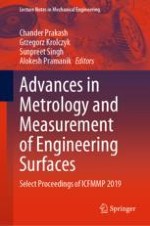This book presents the select proceedings of the International Conference on Functional Material, Manufacturing and Performances (ICFMMP) 2019. The book covers broad aspects of several topics involved in the metrology and measurement of engineering surfaces and their implementation in automotive, bio-manufacturing, chemicals, electronics, energy, construction materials, and other engineering applications. The contents focus on cutting-edge instruments, methods and standards in the field of metrology and mechanical properties of advanced materials. Given the scope of the topics, this book can be useful for students, researchers and professionals interested in the measurement of surfaces, and the applications thereof.
